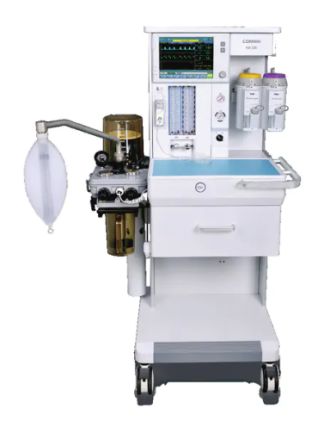What are Invasive Ventilators and Why are They Important?

Invasive ventilators are commonly used to save the life of acutely ill patients with respiratory difficulties usually in the intensive care units of hospitals.
The term ‘invasive’ is used as this form of ventilation involves some instrument penetrating through the mouth, nose, or skin to serve as an artificial airway. The instrument is connected to a mechanical ventilator.
Invasive ventilators differ from non-invasive ventilators in that in the case of the later the interface is generally a face mask.
There are two types of instruments (tubes) for an invasive ventilator:
- Standard Endotracheal Tube
- Tracheostomy Tube
Standard Endotracheal Tube
This is inserted via the nose or the mouth. When the balloon on the cuff is inflated and sealed, the standard endotracheal tube provides a secure airway. It is mostly used in adult patients with acute respiratory failure. Uncuffed endotracheal tubes are used to treat pediatric patients.
Apart from providing mechanical ventilation, the endotracheal tube protects the airway, allows for suctioning of secretions, and facilitates select procedures, including bronchoscopy which allows doctors to examine the inside of the lungs and the bronchi.
Tracheostomy Tube
This is inserted via a stoma, which is a surgically created opening in the trachea. The tracheostomy tube is used in patients who need long term mechanical ventilation.
Both cuffed and uncuffed options are available. A Cuffed tracheostomy tube seals the airway to control the process of mechanical ventilation. Deflated cuffs or cuffless tubes may be introduced when the condition of the patient is more stable.
Why are invasive ventilators so important?
Invasive ventilation is used in the case of patients who cannot breathe on their own due to some critical illness. The procedure continues until patients improve enough to breathe on their own.
The invasive ventilator ensures that the body receives adequate oxygen and that the carbon dioxide is removed.
Used in treating infants and children
Invasive ventilation via a tracheostomy tube is typically used in infants and children with parenchymal lung disease or congenital heart disease.
Also, it is used in treating those young children with severe craniofacial malformations or other causes of the upper airway or central airway obstruction that cannot be corrected by non-invasive ventilation and who require continuous mechanical ventilation.
Helps patients breathe during surgery
An invasive ventilator is used to maintain a patient’s airway during a surgical procedure. Like when intubation is done in the ICU.
Used in patients suffering from ARDS
A Covid-19 related lung injury is classified as acute respiratory distress syndrome (ARDS). The lung’s lining that plays a part in gas exchange is adversely affected by this disease. With muscular disorders, simple ventilators would suffice. But in the case of ARDS, you need supplemental oxygen and hence invasive ventilation is used.
Invasive ventilation in patients with ARDS also allows for the implementation of lung-protective (low tidal volume) ventilation.
Reverses life-threatening conditions such as hypoxemia
Invasive ventilation helps stabilize patients with hypoxemic and hypercapnic respiratory failure. It also decreases inspiratory work of breathing and redistributes blood flow from exercising respiratory muscles to other tissues in patients with shock.
Used to treat acute progressive respiratory acidosis
If non-invasive ventilation fails in the presence of increasing acidosis, invasive ventilation may be required.
Procedures that go with Invasive Ventilation
Suctioning
It is a procedure where a catheter is inserted into the breathing tube to remove secretions (mucus). It is a vital procedure to keep the airway clear.
Spray Medications
A patient may need medications to be delivered through the breathing tube. Such medications are targeted to the airway or the lung and are more effective when delivered this way.
Bronchoscopy
It is a procedure where a doctor inserts a small light with a camera into the airway of the patient through the breathing tube (endotracheal tube). This is a very effective tool for examining the airways in the lungs. If required, doctors can take samples of mucus or tissue for further analysis.
Conclusion
Handling an invasive ventilator is no easy job. It requires doctors, nurses, respiratory therapists, patient care associates, and so on who are trained at using the device to administer invasive ventilation. It does not heal the patient on its own but it can keep a person alive for medications and treatments to take effect.
